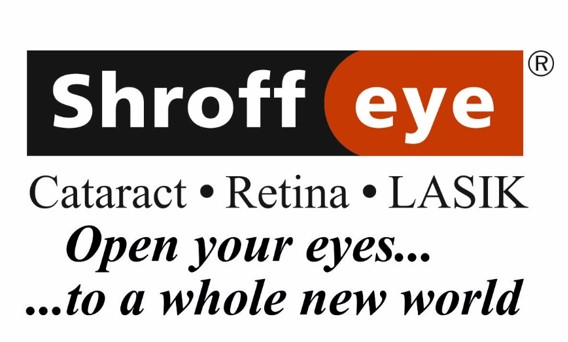Shroff Eye Hospital is India's First Eye Hospital accredited by the Joint Commission International (USA) since 2006. Shroff Eye is also India's first and only Wavelight Concerto 500 Hz LASIK center. Shroff Eye has stood for excellence in eye care since 1919. A firm commitment to quality is at the heart of all services provided at our centers at Bandra(W) and Marine Drive, Mumbai.
What is blepharitis
Blepharitis (pronounced blef-a-right-is) is a common inflammation of the eyelids. It occurs more frequently in older people. There are two main types of blepharitis:
1. Anterior blepharitis – This affects the base of the eye lashes with a dandruff like condition. It is due to a low grade staphylococcal (bacterial) infection in the eyelids
2. Posterior blepharitis – This is due to an over action of the meibomian(seborrheic) glands that can become blocked, inflamed and infected.
What are the symptoms of blepharitis?
Typical symptoms are:
• Watery eyes
• Red eyes
• A gritty, burning or stinging sensation in the eyes
• Eyelids that appear greasy
• Itchy eyelids
• Red, swollen eyelids
• Flaking of the skin around the eyes
• Crusted eyelashes upon awakening
• Eyelid sticking
• More frequent blinking
• Sensitivity to light
• Eyelashes that grow abnormally (misdirected eyelashes)
• Loss of eyelashes
What causes blepharitis?
The exact cause of blepharitis isn’t clear. It may be associated with one or more factors, including:
– Seborrheic dermatitis — dandruff of the scalp and eyebrows
– Bacterial infection
– Clogged or malfunctioning oil glands in your eyelids
– Rosacea — a skin condition characterized by facial redness
– Allergies, including allergic reactions to eye medications, contact lens solutions or eye makeup
– Eyelash mites or lice
What happens if I don’t treat my eyelids?
Although Blepharitis is a long ongoing indolent problem, it has the potential to cause complications such as
– Sty- an infection of the base of the eyelash
– Chalazion – a lump forms on the eyelid, which is usually not tender or red. This develops because of blockage of oil glands present in the eyelid, leading to accumulation of the secretions which in turn leads to inflammation resulting in the formation of a cyst/ lump.
– Eyelash problems – Blepharitis can cause your eyelashes to fall out or grow abnormally (misdirected eyelashes).
– Eyelid skin problems – Long-term blepharitis can induce scarring causing the eyelid edges to turn inward or outward.
– Excess tearing or dry eyes – Abnormal oily secretions, crusts from the eyelashes and other debris can accumulate in your tear film interfering with the healthy lubrication of your eyelids. This can irritate your eyes and cause symptoms of dry eyes or excess tearing.
– Difficulty wearing contact lenses – Because blepharitis can affect the lubrication in your eyes, wearing contact lenses may be uncomfortable
– Chronic pink eye – Blepharitis can lead to recurrent bouts of pink eye (conjunctivitis).
– Injury to the cornea – Constant irritation from inflamed eyelids or misdirected eyelashes may cause a sore (ulcer) to develop on your cornea. Insufficient tearing could predispose you to a corneal infection.
What is the treatment for blepharitis?
Self care and Home remedies for Blepharitis
1. Regular lid hygeine is the mainstay and often the only treatment necessary for blepharitis, regardless of the cause. It helps reduce the inflammation in the eyelids. This needs to be carried out regularly, over the long term to prevent the symptoms from returning.
– Steam bathing: This is needed to soften the oily secretions in the eyelids. Boil some water and pour into a small bowl. Close your eyes and hold over the steam for about 10-15 minutes so that the lids are gently warmed but not so that they become uncomfortable.
ALTERNATIVELY…
– Warm compresses: Soak a clean flannel in hot water and hold against closed eyelids for 5 minutes.
THEN…
– Cleaning the lids: This is performed to remove any debris that has accumulated on the lid margins. Make up a solution by filling a cup with cooled, boiled water and adding one of the following to it: a drop of baby shampoo or half a teaspoon of bicarbonate of soda. Dip a cotton bud dipped in the solution to clean along the base of the lashes in the upper and lower lids using a side-to-side wiping motion. Avoid rubbing the inner surface of the lids.
2. Gentle massage over closed lids will encourage healthy flow of the oily secretions, unclog the opening of the glands and improve blood flow in the lids.
3. It also may be a good idea to stop using eye makeup when your eyelids are inflamed. Also, it’s possible that makeup could reintroduce bacteria to the area or cause an allergic reaction.
Are there any other treatments for blepharitis?
– Ointments for the lids: Antibiotic or steroid ointment may be given for a short while to settle the infection or inflammation. These must be used only on the prescription of an eye specialist. Both these ointments are applied with a cotton bud, and rubbed into the base of the eyelashes.
– Drops for the eye: artificial tear drops are prescribed to be used whenever the eyes feel dry.
– Oral antibiotics: Occassionally long course of oral antibiotics may be needed and Dr Shah will prescribe them when necessary.






